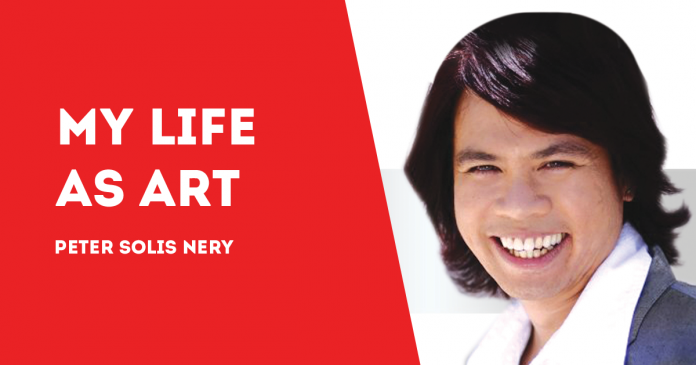
THIS August, the prolific Ilonggo writer Peter Solis Nery releases his 28thbook, “Heart of My Youth”.
It is a volume of collected memoirs written in the late 1990s, which are released in one volume after two decades.
With the original books compiled here are newly minted forewords that introduce each memoir to a new generation of readers.
Manuel Radislao of La Consolacion College in Bacolod City introduces “Moon River, Butterflies, and Me”, which was originally published in 1997.
*
GIFT OF WINGS: A FLIGHT INTO THE HEART, Part 1
by Manuel J. Radislao
*
Peter Solis Nery’s Moon River, Butterflies, & Me is an autobiography-cum-literary book that is resurrected (as part of this Youth of My Heart volume) after its maiden publication 23 years ago.
The book contains a collection of essays that reminisces a span of more than 20 years of friendship among nine significant people in the author’s life.
For some, especially for those into numerology, nine is a significant number because it symbolizes divine completeness. Such completeness can also be said of the author-self as he moves to a greater self-understanding of what love, friendship, loss, and beauty are all about.
*
The book takes us into Peter’s inner world as he provides us with a glimpse, a peek, into the nine significant people who came into his life. The author-self could have started with a straightforward narration of who he is, but instead, he uncannily invokes the Moon River God as his mystical mentor who provides him with snippets of wisdom into the ways of nature in particular, and indirectly to Life in general. Like the river, he compares God to this body of water — eternal and constantly changing, but also regenerating. Though the river has its own share of destructive nature, it is always rejuvenating to those who use it.
On the other hand, the same can also be said of the butterfly, which the author-self takes as his metaphor for his transformative and delicate nature. Paradoxically, the river and butterfly trope, though opposite in nature — the former representing the water element, ever-changing and life-giving; the latter representing the air, fleeting, constantly moving towards beauty and loveliness — both have life-giving and ever-changing qualities.
The same character or nature is also allusive to Peter’s quest for loveliness, for meaning, and ultimately, for understanding.
*
The book is more than just a delightful autobiographical fare. It is also a philosophical treatise on what friendship is all about, its joys, and its attendant pain of separation and loss. The author-self prays that he be given this gift of wings like those of the butterfly — to take flight, to soar high, and to be free as an individual.
*
This reader delightfully finds a pattern that is woven into this great literature. An uncanny design can be gleaned from the book. The reader arbitrarily divides the book into three themes: exploration, imagination, and flight.
The first theme is exploration, the instinctive curiosity in man, which allows him to probe into nature and life as he unassumingly trod the path to maturity and knowledge. Under this theme, Peter introduces us to Satoshi, an entomologist who opened his eyes to a “world of wings and dreams.”
This Japanese friend, a visiting scholar who studied the Philippine species and varieties of butterflies, initiated him into the world of beauty and nature. Satoshi planted in him the seeds of curiosity, boldness, and determination: to soar, and to glide into the unknown as a butterfly.
*
Gio was Peter’s academic rival in all scholastic competitions for four years. This same person was instrumental in prodding Peter to sharpen his skill in the art of letter writing.
Gio, however, only wrote once in their one-sided correspondence of four years. In a short poem written for Gio, Peter sums up this loss and longing for a friend who seldom writes to him:
*
For Gio
Tonight, I fingerwrite your name
against the rain on the windowpane
and to think it was ten years ago
through a tiny glass window
I last saw you…
*
When the author-self entered college, one of the few influential friends who made an impact on him was Lionel, a self-confessed gay boy who introduced him to the world of theatre, which eventually became Peter’s passion, too.
Leo was Peter’s intellectual alter ego who taught him the importance of self-acceptance. The two became the best of friends in college. (To be continued)/PN





